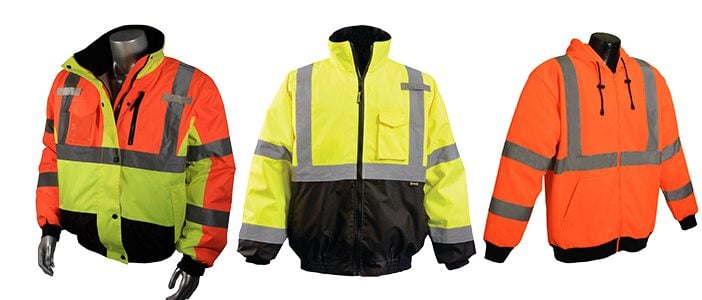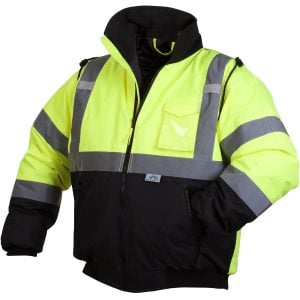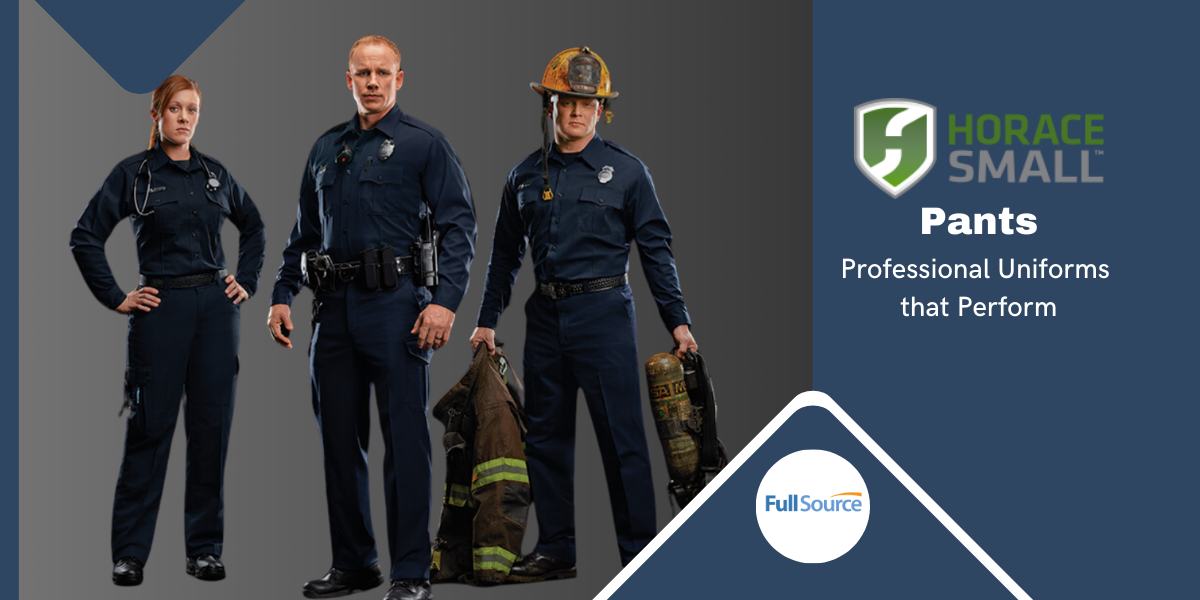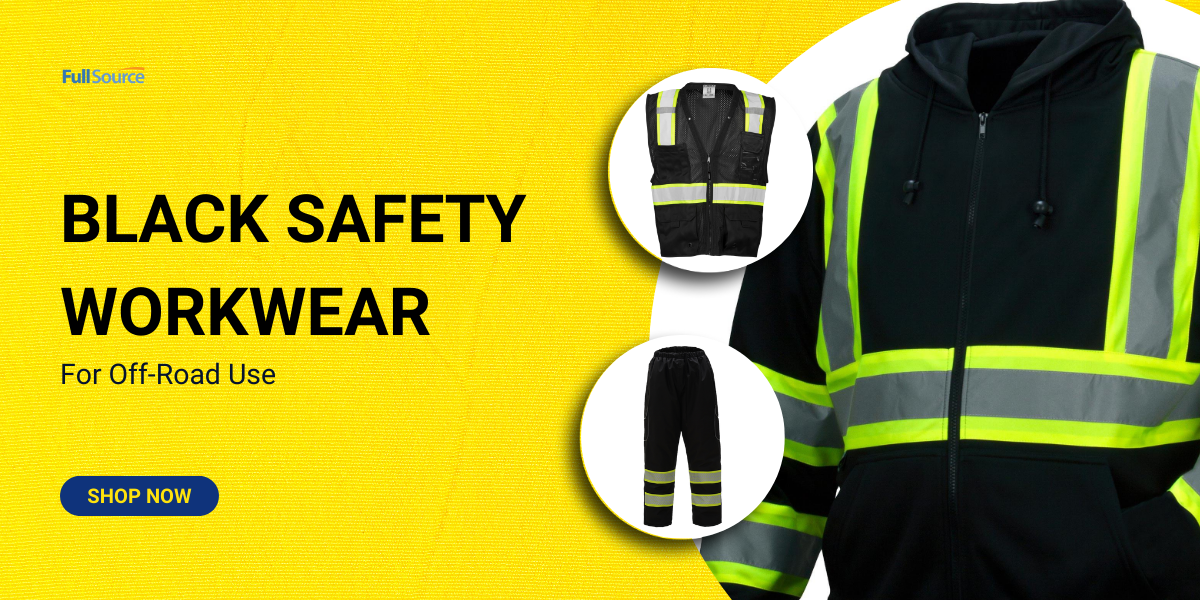Stay safe and warm with safety jackets. With the weather always in flux, it’s better to stay prepared for whatever mother nature throws at you. And with safety on the line, being visible can make all the difference. Safety jackets feature high visibility colors such as yellow/lime or orange. Then added reflective stripes keep visibility at a maximum. Perfect for working in inclement weather or during night time. The safety jackets we’ll break down are bomber jackets, black bottom jackets, and safety sweatshirts and their benefits.
Heavy Duty Bomber Jackets – An Intro to Safety Jackets
High visibility bomber jackets are ideal for many different work environments. Because of its durability, warmth, and visibility. These safety jackets were first named ‘bomber jackets’ after US pilots needed something warm on planes. Great for survey crews, construction workers, emergency respondents, and plenty more. These tough jackets are ANSI (American Nation Standards Institute) rated to meet safety requirements. Aside from the standard yellow and orange, there is also the black bottom or two-tone style. The black bottom safety jackets can help hide dirt, convenient for messy jobs. Whereas a two-tone can aid in increasing your visibility to those around you. Features can include removable or built-in liners, weatherproof shells, number of pockets, ect.
Safety Sweatshirts the Light Version of Safety Jackets
However, if the job doesn’t need one quite as heavy as a bomber jacket, then the next best thing is a safety sweatshirt. An easy way to stay warm without the bulk of a jacket. Styles range from hooded (zippered or pullover), crewneck sweatshirt, to black bottom. They also come in ANSI class 2 and class 3.
Conclusion
All in all, safety jackets provide an extra layer of protection. With the ability to stay visible and warmth. There are plenty of styles to choose from, so no job is too big or small. Because construction and outdoor work doesn’t need to end once the temperature drops.






1 Comment
Pingback: High Visibility Safety Parkas - Full Source Blog